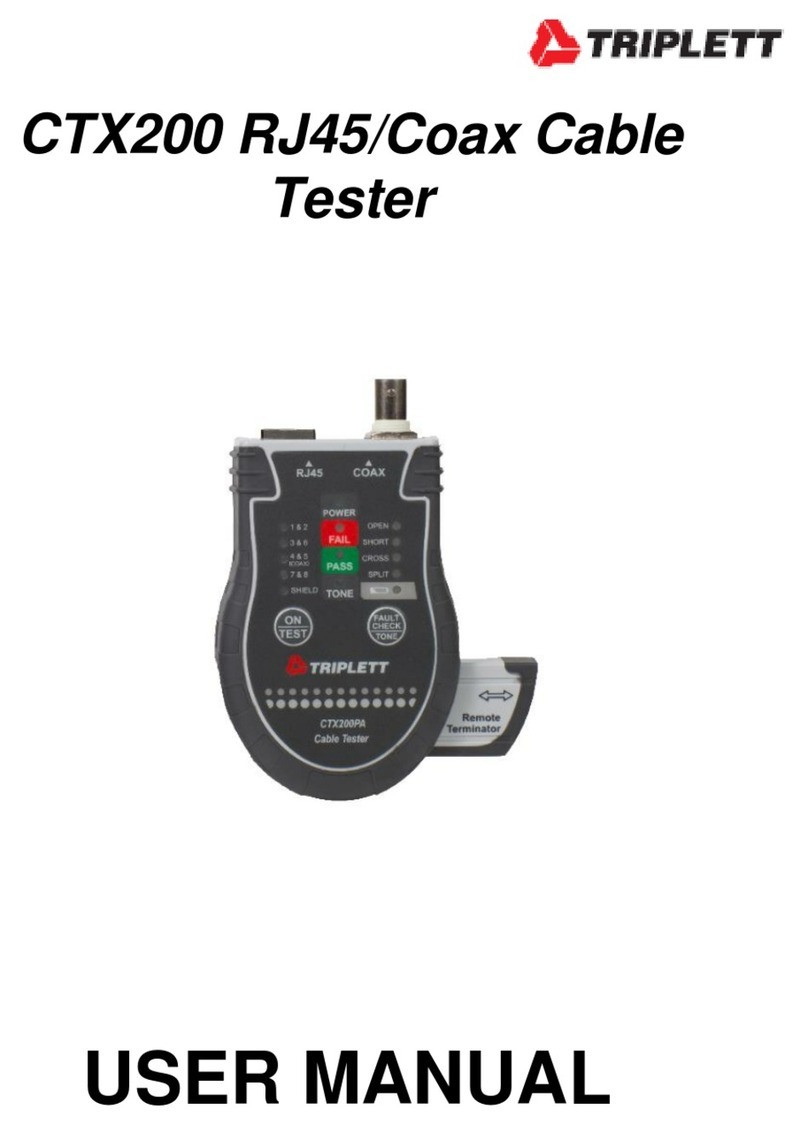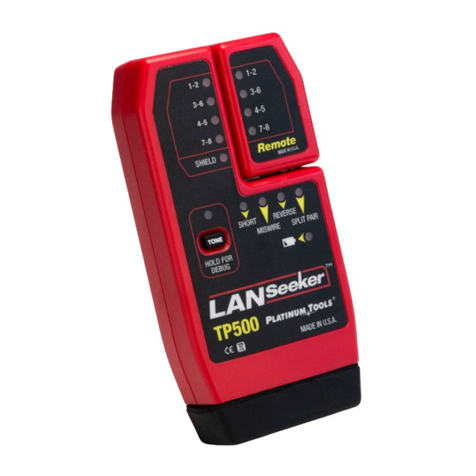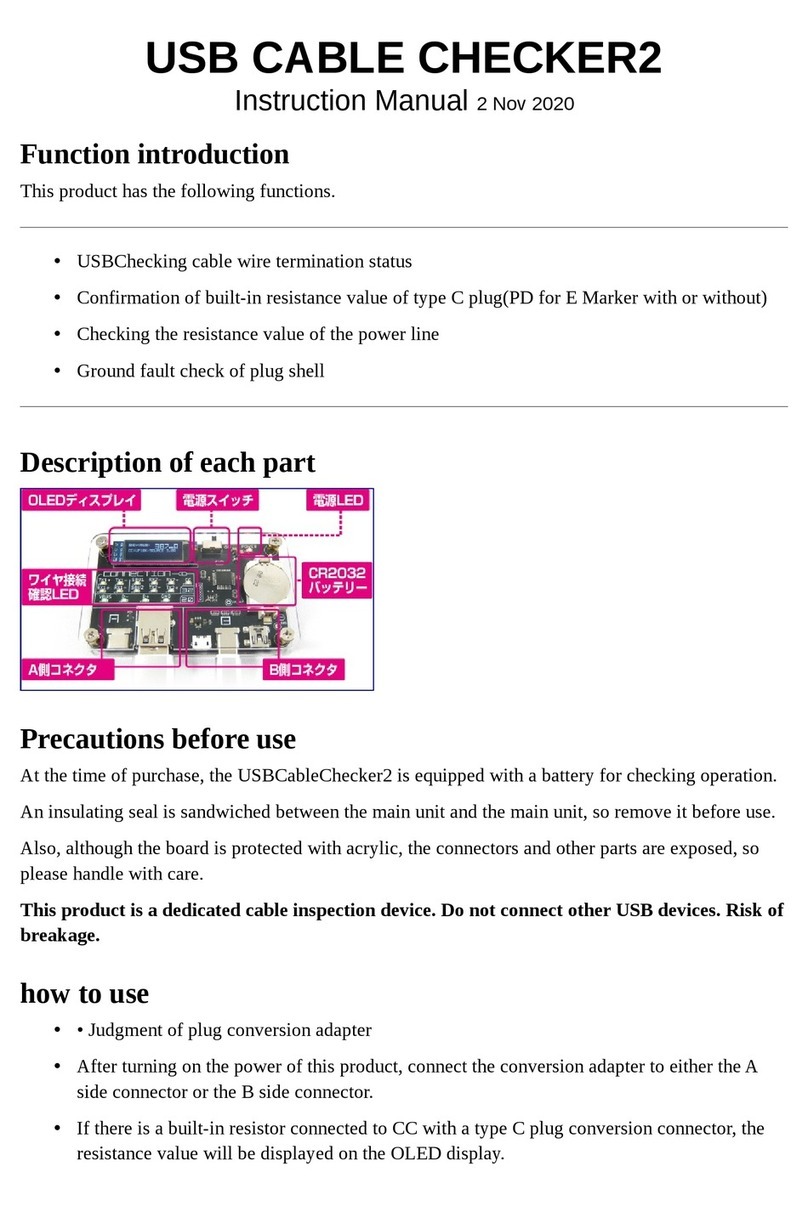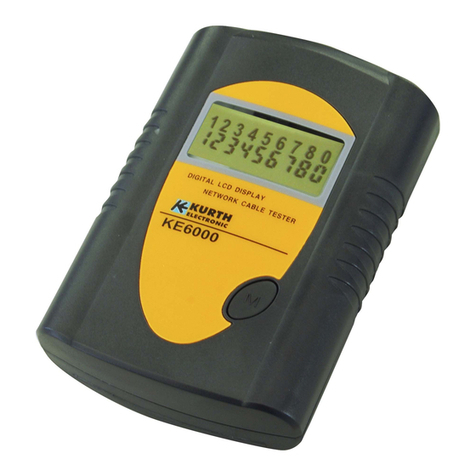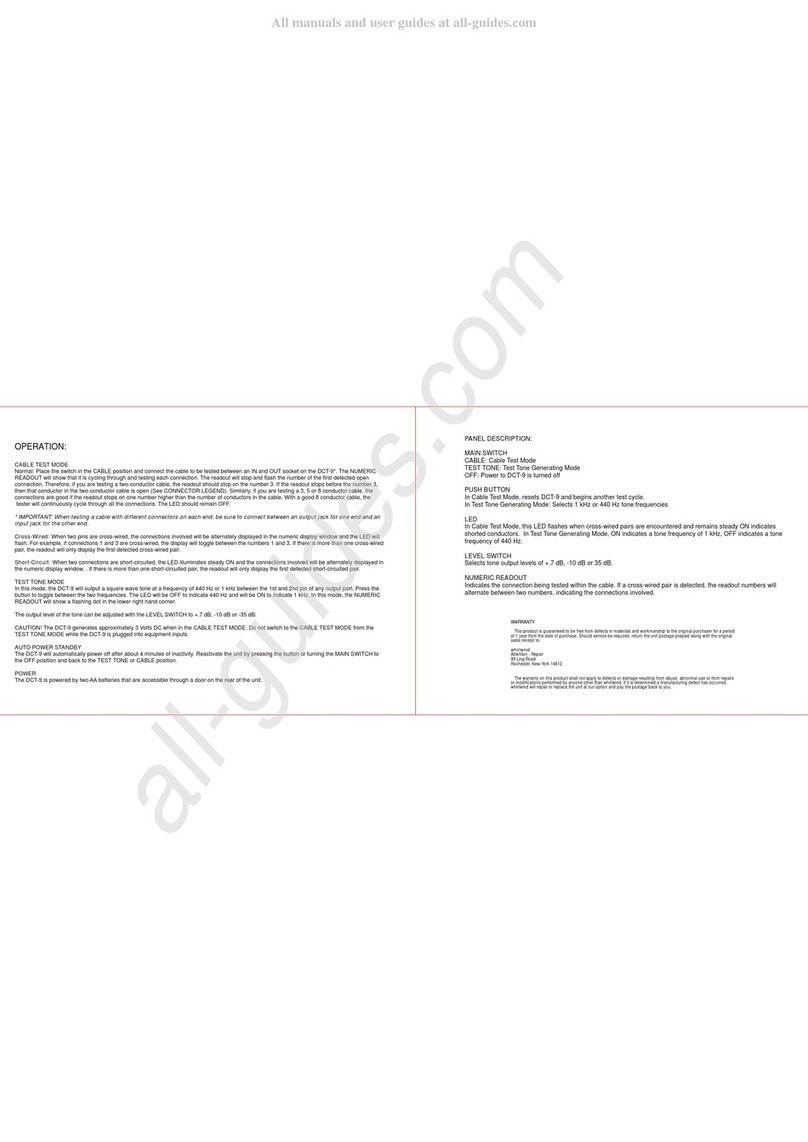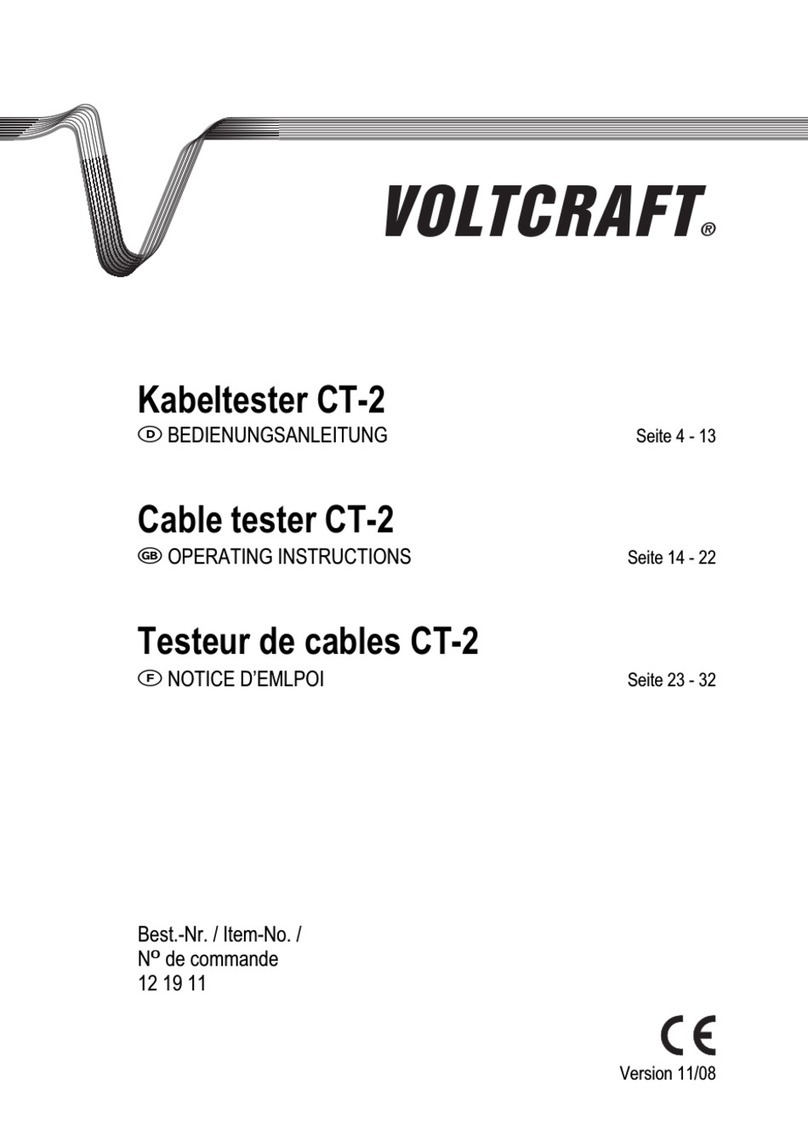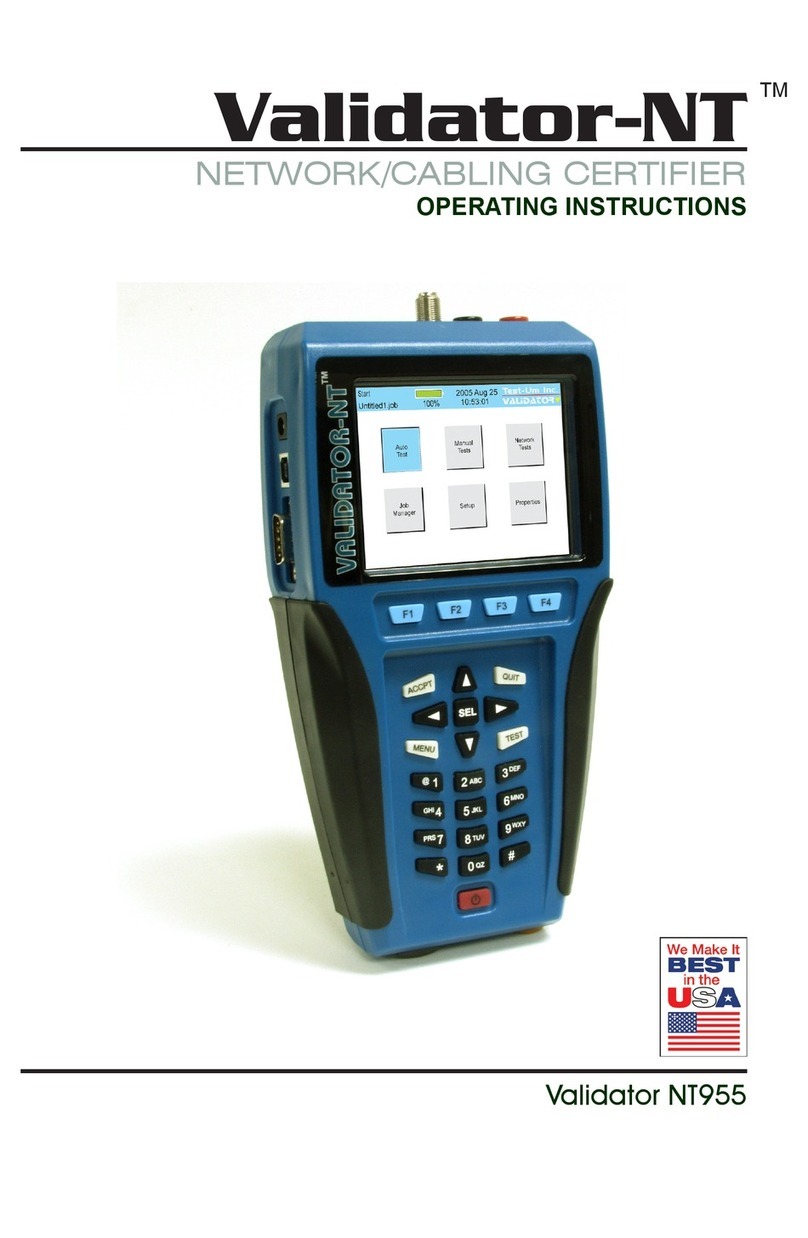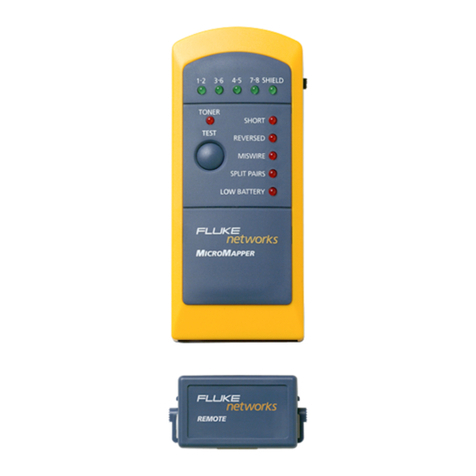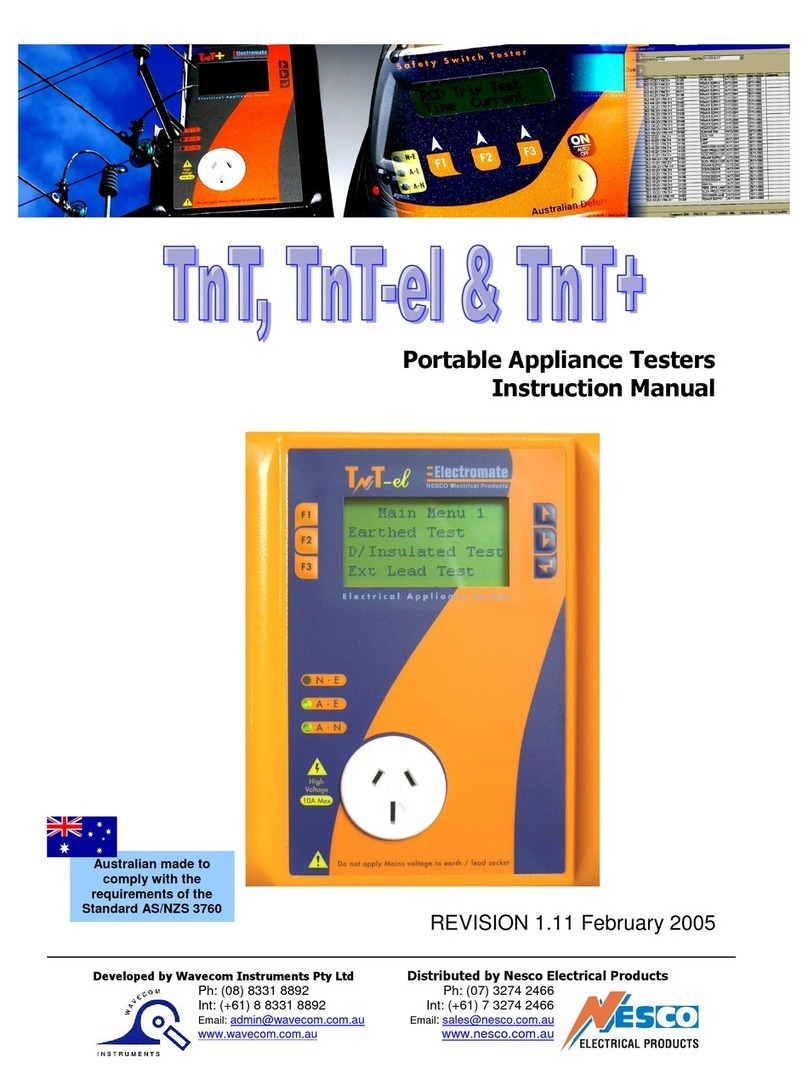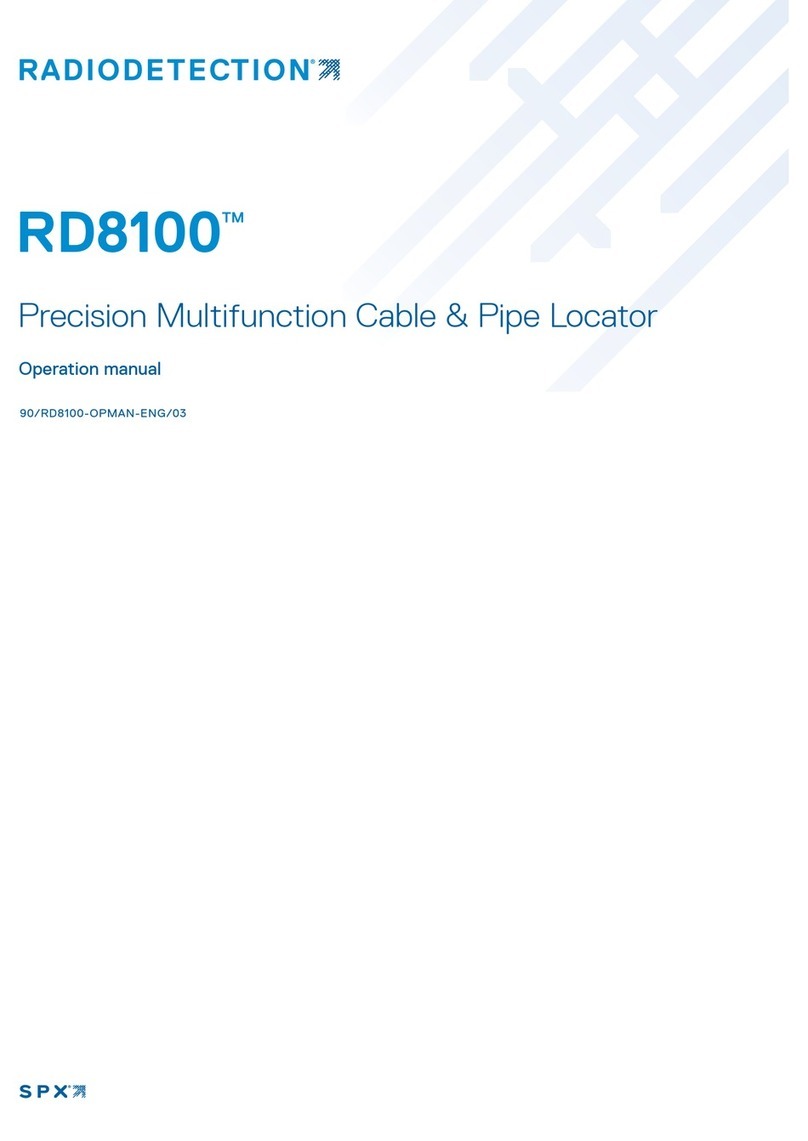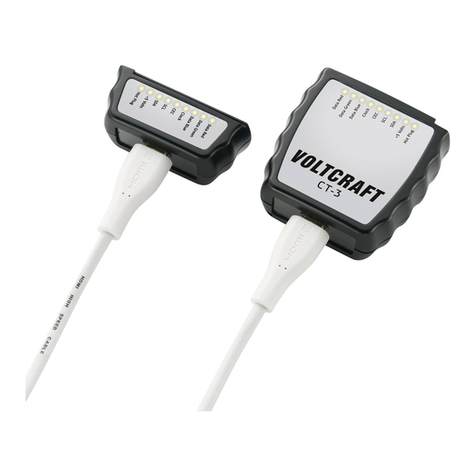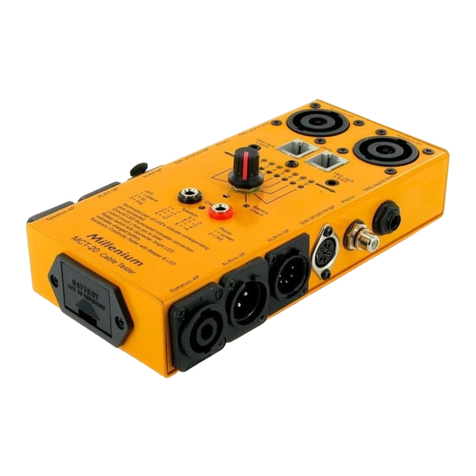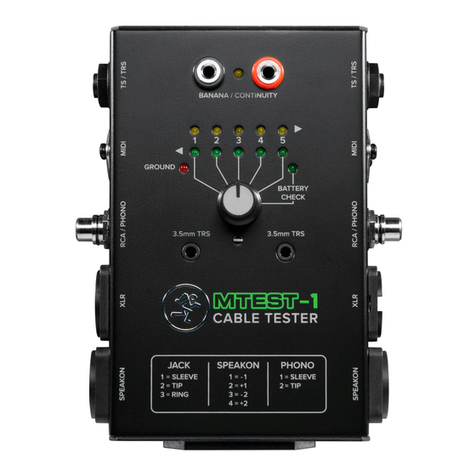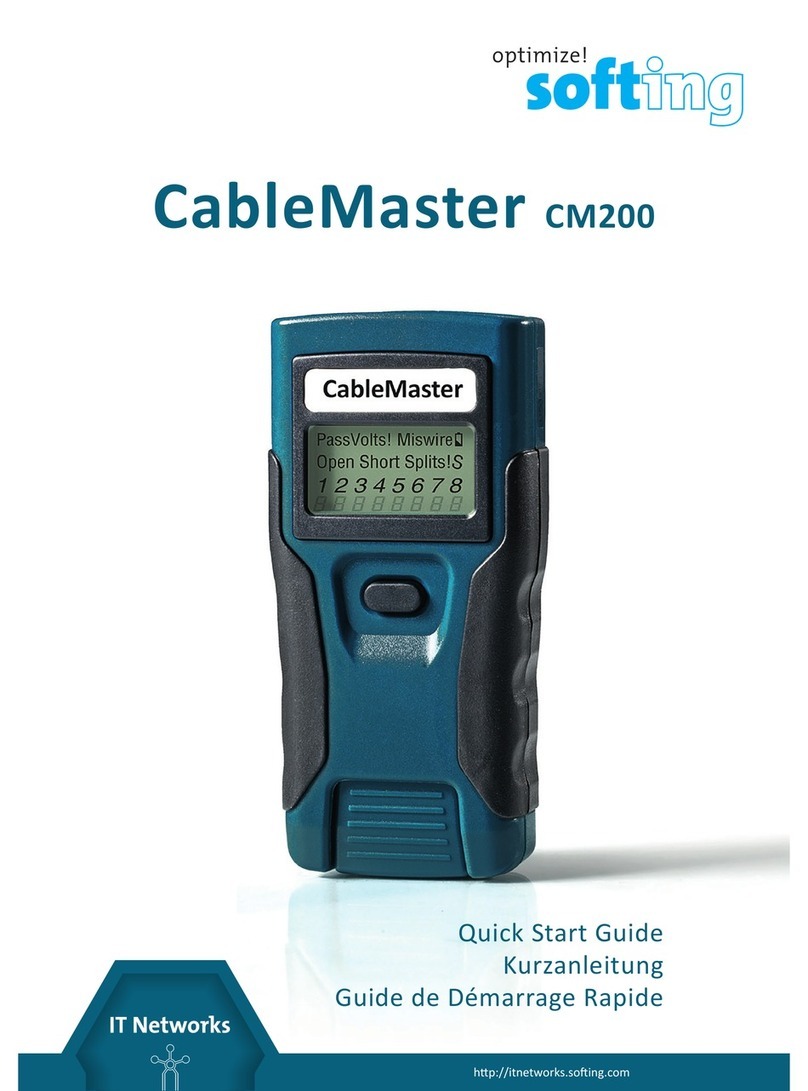
After that, the information window will be available:
Pressing the key will take the analyzer to the Settings menu. Pressing the key will return the analyzer
to the Main menu.
Change of settings screens is carried out with keys and change of parameters
with keys.
There are currently 7 basic settings available in the Stick 230 analyzer:
1. Turn on/off Bluetooth (enabled by default). If you do not use the Bluetooth connection of the analyzer with the
smartphone, turn off this function. This will save battery power.
2. Enable screen inversion (disabled by default).
3. Analyzer automatic shutdown time (battery saving mode). Available values: never, 5 minutes, 10 minutes,
30 minutes, 60 minutes, 90 minutes. Default: 5 minutes.
4. Choosing ITU region. The default is 1 region. The choice of region affects the boundaries of predefined ranges.
The width of most ranges in each region is different.
5. Band search. This setting affects the speed worked of the Multé function. There are two
meanings: Normal and Deep. In Normal mode, the Multe function is fast, but there is a chance of missing the
narrow resonance of the antenna or inaccurate determination of resonance frequency. In Deep mode, the
measurement speed increases, but the possibility of mistake is minimized.
6. System Z0. Choosing a system impedance value. Available values: 12.5 Ohm, 25 Ohm, 28 Ohm, 37 Ohm, 50
Ohm, 75 Ohm, 100 Ohm, 150 Ohm, 200 Ohm, 300 Ohm, 450 Ohm, 600 Ohm. Default: 50 Ohm. This setting is
needed in cases where, for example, when measuring, a broadband transformer with a transformation ratio of 1: 9
is used. In this case, the impedance at the transformer output will be 450 Ohms and for the correct readings of the
analyzer, it is necessary to set the system impedance equal to 450 Ohms.
7. Factory Reset. Reset all analyzer settings to factory defaults. To reset, press and hold the key.
Settings are saved automatically when they are changed.
To exit the Settings menu, press the or keys.
AntScope2 and AntScope for Android
Stick 230 analyzer can work with AntScope2 and AntScope for Android.
AntScope2 works with personal computers and laptops running operating systems Microsoft Windows, macOS,
Linux Ubuntu.
The latest versions of the software for various operating systems can be downloaded
here: https://rigexpert.com/files/software/Antscope/
Important! The Stick 230 analyzer does not work with the first version of AntScope.
To work with AntScope2 the analyzer does not require the installation of any drivers. Just connect the analyzer
to the PC via the USB cable and run the AntScope2 program (the program must be downloaded and installed
first). The program should automatically recognize the analyzer and prepare for work.
At the same time, the following information will be displayed in the upper part of the program window:
